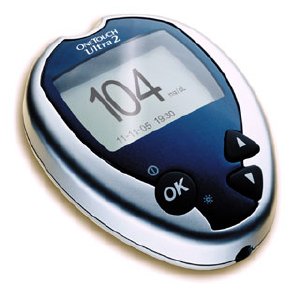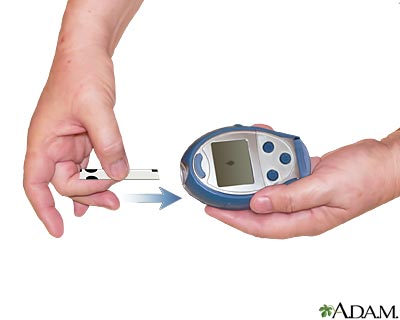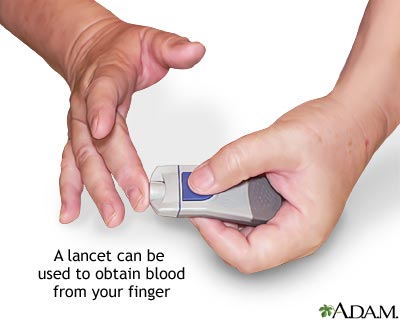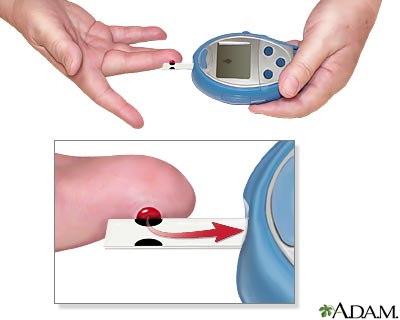 Biosensor 3
Biosensor 3
Glucose Meter
A Glucose Meter is used to test glucose levels in the blood. Glucose is a sugar and a main energy source for the body. Insulin helps the body use glucose. Insulin a hormone, is produced in the pancreas which is located between the stomach and the spine.
When glucose levels are high, insulin is released from the pancreas into the blood to lower the levels. Some people have a problem where their pancreas produces too much or too little insulin.
A person may have a form a diabetes where not enough insulin is produced and glucose levels remain too high. A diabetic person can begin to have Diabetic Neuropathy where high glucose levels start to damage fibers in the body. The areas of the body that are most commonly damaged are the nerves in the legs and feet.
When too much insulin is produced, glucose levels are to low and the person has Hypoglycemia. Low glucose levels can also occur when a diabetic person receives too much insulin in a medication.
Both diabetes and Hypoglycemia can be monitored using a glucose meter. When a person is diagnosed with a form of diabetes or Hypoglycemia a doctor will advise them to purchase a glucose meter which may look like this...


The way a glucose meter can monitor these diseases is by showing a person what their blood glucose levels are. A glucose meter is most commonly used through the following steps:
Step 1: Insert a test strip into the device.

Step 2: Make sure the hands are washed. Prick a finger gently with a Lancet. ( The side of the finger is usually pricked because that area is less sensitive.)

Step 3: Take the test strip and touch the small amount of blood with it. (If there is not enough blood squeeze the area around the finger). The blood goes into the test strip and then the device calculates the blood glucose levels.

Normal glucose levels are: 70 - 100 mg/dL (milligrams of glucose per deciliter of blood)
Pre-diabetic glucose levels: 100 - 125 mg/dL
Diabetic glucose levels are more than: 125 mg/dL
Hypoglycemia glucose levels are : 60 mg/dL or less
Works Cited
Information on glucose and insulin
http://diabetes.webmd.com/blood-glucose
http://pathology.jhu.edu/pancreas/BasicOverview1.php
Information on diabetes, Neuropathy
http://www.mayoclinic.com/health/diabetes/DS01121, http://www.mayoclinic.com/health/diabetic-neuropathy/DS01045
Information on Hypoglycemia
http://www.emedicinehealth.com/low_blood_sugar_hypoglycemia/article_em.htm
Picture of device
http://images2.wikia.nocookie.net/diabetes/en/images/8/8b/Onetouchultra2.jpg
Picture of Step 1
http://www.nlm.nih.gov/medlineplus/ency/presentations/100220_2.htm
Picture of Step 2
http://www.nlm.nih.gov/medlineplus/ency/presentations/100220_3.htm
Picture of Step 3
http://www.nlm.nih.gov/medlineplus/ency/presentations/100220_4.htm